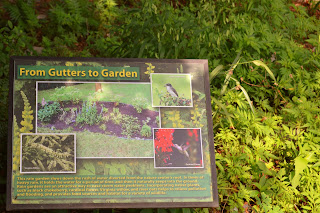Summer Camp Fun
Drop into Hemlock Bluffs on a weekday during summer and all is seemingly quiet. Few cars in the parking lot and the nature center is quiet, but for a few Moms with little ones playing at the track table in the lobby. But looks are deceiving. All summer long all sorts of nature, science and outdoor discovery camps are in full swing. Stand outside the classroom when the kids are inside - can you hear excited voices engaged while making nature crafts or reviewing the rules of the trail before they head outside?
 |
| Under a giant log is a good place to search for land salamanders |
Walk the trail - can you hear voices rising from the creek as children search for salamanders under rocks and leaves? Look into the woods where camp kids wander watching the tree canopy bird watching and learning about the connection between insects that live here in summer and neotropical migrant birds who visit in summer to eat them, then return south in winter where it's warm and bugs persist. Can you hear them saying, "I can see it!".
 |
| Remember cooking marshmallow on the campfire? Oh, that's too close - it'll burn! |
Step into the courtyard at the end of the day and you might be treated to the sight of a roaring campfire. Staff know that kids deserve the entire camp experience, including s'mores on the campfire. You may even hear a few campfire songs or stories. It might take you back to the good old days. Can you hear one kid saying, "look at mine, it's on fire!".
 |
| Staff encourages interaction, questions and investigation. Children leave with a sense of awareness about the natural world they can only receive in the out-of-doors. |
Summer camp registration begins early in Cary, but some spaces for upcoming camps are still available. Call the nature center to find out more (919)387-5980.

































